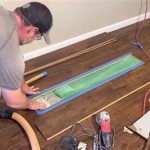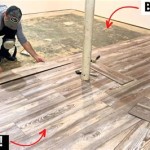Understanding the Benefits of Raised Kennel Flooring
Raised kennel flooring has emerged as a prominent feature in modern kennel design, recognized for its contribution to canine health, hygiene, and overall well-being. Traditional kennel floors, often constructed from concrete or other solid materials, can present challenges related to drainage, temperature regulation, and comfort. Raised flooring systems address these concerns by providing an elevated platform that separates dogs from the ground, fostering a cleaner, drier, and more comfortable environment. The selection of appropriate kennel flooring is critical to maintaining a healthy and sanitary environment for the animals housed within.
The purpose of this article is to provide a comprehensive overview of raised kennel flooring, exploring its advantages, materials, installation considerations, and maintenance requirements. By understanding the various aspects of raised flooring, kennel owners and operators can make informed decisions that optimize the health and safety of their canine companions.
Improved Hygiene and Sanitation
One of the most significant benefits of raised kennel flooring is its contribution to improved hygiene and sanitation. Traditional solid floors often trap urine, feces, and other debris, creating a breeding ground for bacteria and parasites. Constant exposure to these contaminants can lead to a variety of health problems, including skin infections, respiratory issues, and gastrointestinal distress. Raised flooring systems mitigate these risks by allowing liquids and waste to drain away freely, preventing them from accumulating on the surface where dogs spend their time.
The elevated design facilitates efficient cleaning and disinfection. Many raised flooring systems are designed with gaps or perforations that allow fluids to pass through easily. This makes it simpler to flush away waste with water and cleaning solutions. The accessibility beneath the flooring also allows for thorough cleaning and disinfection of the sub-floor, further minimizing the risk of bacterial growth and odor accumulation. Regular and effective cleaning practices are essential for maintaining a hygienic kennel environment, and raised flooring systems significantly enhance the effectiveness of these practices.
Furthermore, certain raised flooring materials are inherently resistant to bacteria and mold growth. Polypropylene and other plastics are often used in the construction of raised flooring due to their non-porous nature, making them less susceptible to microbial contamination compared to porous materials like concrete or wood. This inherent resistance contributes to a healthier environment for dogs and reduces the need for frequent and aggressive cleaning procedures.
Enhanced Comfort and Temperature Regulation
Beyond hygiene, raised kennel flooring offers notable improvements in comfort and temperature regulation. Solid concrete floors, for instance, can become extremely cold in the winter and uncomfortably hot in the summer. These temperature extremes can cause discomfort and stress for dogs, potentially leading to health problems. Raised flooring acts as a thermal barrier, insulating dogs from the cold ground in winter and providing a cooler surface in summer.
The air gap beneath the raised flooring allows for air circulation, which helps to regulate temperature and reduce humidity. This is particularly beneficial in warmer climates, where stagnant air can contribute to overheating and heat stress. The enhanced air circulation also helps to dry the floor more quickly after cleaning or accidental wetting, further reducing the risk of bacterial growth and odor accumulation.
The surface texture of raised flooring also contributes to comfort. Many raised flooring systems are designed with a slightly textured surface that provides grip and prevents slipping. This is particularly important for dogs with mobility issues or those recovering from injuries. The cushioning effect of some flooring materials can also reduce stress on joints and muscles, making it more comfortable for dogs to stand and lie down for extended periods.
The choice of flooring material also plays a role in comfort. Softer, more flexible materials like rubber or certain types of plastic can provide a more comfortable surface than hard, rigid materials like concrete or metal. The selection of the appropriate material should take into account the size, breed, and specific needs of the dogs housed in the kennel.
Durability and Longevity
The durability and longevity of raised kennel flooring are critical factors when considering its overall value and cost-effectiveness. Selecting a flooring system constructed from high-quality materials that can withstand the rigors of kennel use is essential for minimizing maintenance and replacement costs. Factors such as the size and weight of the dogs, the frequency of cleaning, and the exposure to harsh chemicals can all impact the lifespan of the flooring.
Polypropylene and other durable plastics are commonly used in raised kennel flooring due to their resistance to impact, moisture, and chemical degradation. These materials are less susceptible to cracking, warping, and rotting compared to wood or concrete, making them a more durable and long-lasting option. Metal flooring systems, typically constructed from stainless steel or aluminum, are also highly durable and resistant to corrosion, but they can be more expensive than plastic options.
The design and construction of the flooring system also play a role in its durability. Flooring systems with interlocking tiles or panels provide a strong and stable surface that can withstand heavy use. The support structure beneath the flooring should also be robust enough to support the weight of the dogs and any equipment placed on the floor. Regular inspection and maintenance can help to identify and address any potential problems before they escalate, further extending the lifespan of the flooring.
Investing in a high-quality raised kennel flooring system can provide long-term benefits by reducing maintenance costs, minimizing the risk of injury, and improving the overall health and well-being of the dogs housed in the kennel. While the initial investment may be higher than traditional flooring options, the long-term cost savings and improvements in animal welfare often make it a worthwhile investment.
Types of Raised Kennel Flooring Materials
The market offers diverse materials for raised kennel flooring, each possessing distinct properties suitable for specific needs. Evaluating these materials based on durability, cleanability, comfort, and cost is paramount in selecting the optimal flooring solution. The most common types include:
Polypropylene: This plastic material is highly regarded for its water resistance, durability, and ease of cleaning. It resists bacterial and mold growth, contributing to a hygienic environment. Polypropylene is also relatively lightweight, simplifying installation and maintenance. The initial cost is moderate, making it an attractive option for many kennel owners.
Rubber: Rubber flooring is known for its cushioning effect, providing comfort and reducing joint stress for dogs. It offers excellent slip resistance, which is beneficial for dogs with mobility issues. Rubber is typically more expensive than polypropylene and may require more frequent cleaning due to its porous nature.
Stainless Steel: Stainless steel is exceptionally durable and hygienic, making it ideal for kennels requiring stringent sanitation. It resists corrosion and is easy to clean. However, stainless steel can be expensive and may not provide the same level of comfort as rubber or polypropylene. It can also become very cold, causing discomfort for the animals.
Aluminum: Aluminum is another durable and corrosion-resistant metal. Though lighter than stainless steel, it shares similar drawbacks, including a higher cost and potential for discomfort due to temperature variations. Aluminum flooring is often used in situations demanding high durability and low maintenance.
The selection of the appropriate material should consider the specific demands of the kennel environment, the budget constraints, and the primary needs of the dogs.
Installation Considerations
Proper installation of raised kennel flooring is critical for its functionality and longevity. A poorly installed flooring system can lead to drainage problems, instability, and potential hazards. Before installation, the sub-floor should be thoroughly cleaned and leveled to ensure a smooth and even surface. Any existing cracks or imperfections should be repaired to prevent moisture from seeping through.
The installation process will vary depending on the type of flooring system. Interlocking tiles are typically the easiest to install, requiring minimal tools and expertise. Modular systems may require more specialized tools and techniques. Regardless of the system, it is essential to follow the manufacturer's instructions carefully to ensure proper installation.
Drainage is a critical consideration during installation. The flooring system should be designed and installed to allow for efficient drainage of liquids and waste. This may involve incorporating sloped surfaces or drainage channels. The accessibility of the sub-floor for cleaning and maintenance should also be considered during installation. It is often beneficial to install a drainage system that directs waste to a designated collection point for easy disposal.
Proper ventilation is also crucial for maintaining a healthy kennel environment. Adequate airflow beneath the raised flooring helps to prevent moisture buildup and reduce the risk of bacterial growth. The installation should allow for sufficient air circulation to promote drying and minimize odor accumulation.
Finally, safety is paramount during installation. Appropriate safety precautions should be taken to protect workers from injury. This includes wearing appropriate personal protective equipment, such as gloves and eye protection. The installation area should be well-ventilated to prevent the buildup of fumes or dust. A professional installer can ensure the flooring is properly installed and meets all safety standards.
Maintenance and Cleaning Protocols
Routine maintenance and cleaning are essential to preserving the integrity and hygiene of raised kennel flooring. Consistent upkeep can prolong the life of the flooring material and minimize the spread of disease. The frequency and intensity of cleaning depend on the number of animals housed, their activity levels, and the flooring material.
Daily cleaning should involve removing solid waste and rinsing the floor with water. This prevents the buildup of debris and odors. Regularly cleaning the entire surface with a mild detergent and disinfectant effective against common canine pathogens is crucial. The specific disinfectant should be chosen based on its efficacy and safety for the animals.
The maintenance protocol should incorporate regular inspections to identify any damage or wear. Cracks, chips, or loose tiles can compromise the integrity of the flooring and create hiding places for bacteria. Promptly addressing any damage can prevent further deterioration and maintain a sanitary environment.
Pressure washing can be effective for thoroughly cleaning raised kennel flooring, particularly for removing stubborn stains and debris. However, caution should be exercised to avoid damaging the flooring material. Adjusting the pressure and using appropriate nozzles can prevent damage while ensuring effective cleaning.
In addition to regular cleaning, periodic deep cleaning should be conducted to remove accumulated dirt and grime. This may involve using specialized cleaning products or equipment. Regular maintenance and cleaning extend the life of the flooring, reduce the risk of disease transmission, and contribute to a healthier environment for the dogs.

The Best Long Lasting Dog Kennel Flooring Racs

Raised Dog Kennel Flooring For Veterinary Offices Tristar Vet

Kennel Flooring Comfortable Easy To Clean Plastic Floor

Raised Cage Floor Plastisol Coated For Veterinary Clinic Use

Permeable Dog Kennel Flooring Ecoraster North America

Cove K9 Kennel Raised Flooring

Kennel Deck Com

Kennel Tuff Plastic Dog Flooring Duraplas

Kennel Flooring Comfortable Easy To Clean Plastic Floor

Kennel Systems
Related Posts








